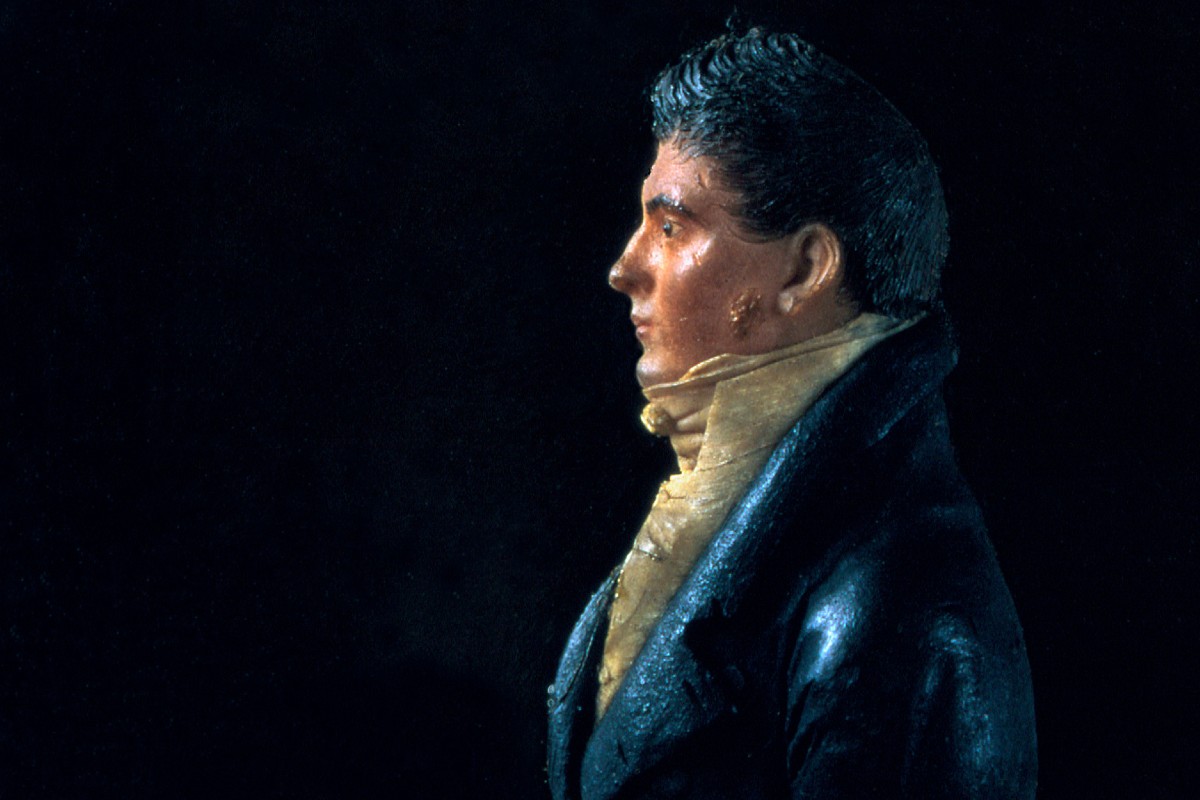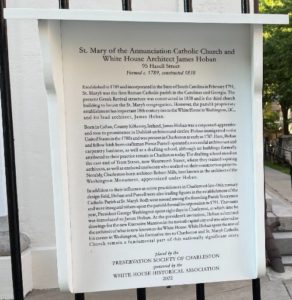
By Andy Brack
A former Charleston resident is world-famous, even though you’ve probably never heard of him.
But mention James Hoban’s life work as designer and builder of The White House – and you immediately understand his place in American history.
“From 1792 to 1831, almost 30 years, James Hoban was involved in the building, rebuilding and additions to the White House,” White House Historical Association (WHHA) President Stewart McLaurin said in an interview. “Here’s a man who really isn’t known in Washington or Charleston, but his life’s work is known the world over by three words, ‘The White House.’”
The association now has a new podcast that focuses on the years Hoban, an Irish immigrant, spent in Charleston before moving north to design and build the White House. His story blends architectural history and historic preservation, McLaurin said.
“He was bringing with him a stylistic influence on the mechanics of architecture,” said McLaurin, who has written a book on Hoban, too. “On the other hand, he knew how to draft. At that time, that really was a nuance of ideas coming together in architectural education.”
Hoban, born in Ireland around 1755, studied drawing under an Irish architect and excelled. After a six-year apprenticeship, he emigrated in 1785 to the United States, landing in Philadelphia and establishing himself as an architect. Two years later, he was in Charleston where he and fellow architect Pierce Purcell established an architectural firm, carpentry business and drafting school.
One of his students was Robert Mills, who designed several classic buildings around the state as well as the Washington Monument. Also trained at the school: Enslaved craftsmen who worked on the company’s construction projects.
 None of Hoban’s Charleston works survive today, McLaurin said, but the architect helped to rebuild the county courthouse after a fire. Meanwhile, Hoban’s place in history was marked in Charleston in 2022 when the WHHA and Preservation Society of Charleston erected a plaque about Hoban at St. Mary of the Annunciation Catholic Church on Hasell Street. The plaque outlines Hoban’s career, including how he was a founding member of the Charleston church, officially incorporated in 1791.
None of Hoban’s Charleston works survive today, McLaurin said, but the architect helped to rebuild the county courthouse after a fire. Meanwhile, Hoban’s place in history was marked in Charleston in 2022 when the WHHA and Preservation Society of Charleston erected a plaque about Hoban at St. Mary of the Annunciation Catholic Church on Hasell Street. The plaque outlines Hoban’s career, including how he was a founding member of the Charleston church, officially incorporated in 1791.
That same year when George Washington visited Charleston for eight days, he apparently saw several buildings that Hoban had been part of. At the time, Washington was under a deadline to get an executive building and the Capitol built by 1800. While there’s not a lot of information about what happened in Charleston in 1791, it’s clear Hoban made an impression on Washington because the first president summoned the architect to Philadelphia in 1792 to take part in a design competition for the White House. Hoban won.
Until his death in 1831, Hoban worked in the “federal city” that eventually took Washington’s name. From 1792 to 1800, Hoban oversaw design, building and deconstruction of the White House. The second president, John Adams, moved in in 1800. After a fire in 1814 during the War of 1812, Hoban spent three years rebuilding the residence. President James Monroe later had him build the White House’s south portico and President Andrew Jackson had him build the north portico.
But none of that may have happened had Hoban not been in South Carolina.
“This story of James Hoban, what he brought with him in his experience in Ireland, he refined and grew here in Charleston. And then he took with him to the federal city,” McLaurin said. “It became his life’s work.”
McLaurin’s book on Hoban is titled “James Hoban: Designer and Builder of the White House.”
- Have a comment? Send to: feedback@statehousereport.com.


